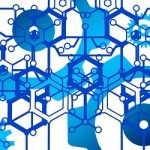A-list candidate for fault-free quantum computing delivers surprise

(Phys.org) A Rice University-led study is forcing physicists to rethink superconductivity in uranium ditelluride, an A-list material in the worldwide race to create fault-tolerant quantum computers.
Uranium ditelluride crystals are believed to host a rare “spin-triplet” form of superconductivity, but puzzling experimental results published this week in Nature have upended the leading explanation of how the state of matter could arise in the material. Neutron-scattering experiments by physicists from Rice, Oak Ridge National Laboratory, the University of California, San Diego and the National High Magnetic Field Laboratory at Florida State University revealed telltale signs of antiferromagnetic spin fluctuations that were coupled to superconductivity in uranium ditelluride.
The race to find spin-triplet materials has heated up in recent years due to their potential for hosting elusive quasiparticles called Majorana fermions that could be used to make error-free quantum computers.
“People have spent billions of dollars trying to search for them,” Rice study co-author Pengcheng Dai said of Majorana fermions, hypothetical quasiparticles that could be used to make topological quantum bits free from the problematic decoherence that plagues qubits in today’s quantum computers.
The problem with uranium ditelluride is the field required to destroy superconductivity is 40 Tesla,” Dai said. “That’s huge. For 40 years, people thought the only possibility for that to occur is that when you put a field on, the spins are already aligned in one direction, meaning it’s a ferromagnet.”
In the study, Dai and Rice postdoctoral research associate Chunruo Duan, the study’s lead author, worked with Florida State co-author Ryan Baumbach, whose lab grew the single crystal samples of uranium ditelluride used in the experiment, and UC San Diego co-author Brian Maple, whose lab tested and prepared the samples for neutron-scattering experiments at Oak Ridge’s Spallation Neutron Source.
Si and Nica, who’s now at Arizona State University, showed antiferromagnetic correlations could give rise to plausible, low-energy, spin-triplet pairing states.
“Spin-triplet pairing states are highly improbable in the vast majority of cases because pairs will form as spin-singlets in order to lower their energy,” Si said. “In uranium ditelluride, spin-orbit coupling can change the energy landscape in a way that makes spin-triplet pairing states more competitive with their spin-singlet counterparts.”



















